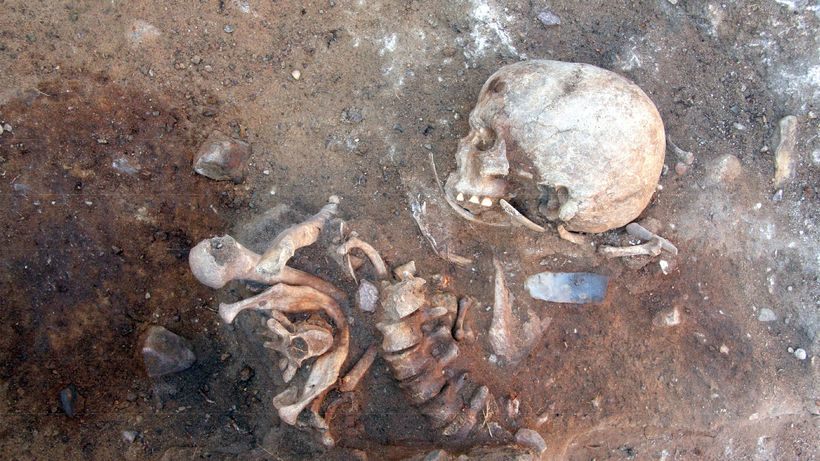Archaeologists in Germany have excavated a burial site, first found in 1962 on top of a rocky hill, that they now believe is the first “true cemetery in northern Europe or Scandinavia,”

The burial site, at Groß Fredenwalde, north of Berlin, dates back 8,500 years to the Mesolithic period, the archaeologists report in the journal Quaternary. At the time, Europe was populated by hunter-gatherers who rarely stayed in one place. It’s unusual to find a concentration of graves, but there have been nine skeletons found in this one spot so far, and likely more will be found.
Included in those finds are two burials of particular interest. One is a six-month-old infant, who likely died of malnutrition. It’s unusually well preserved: its arms are still folded across its chest, and in the surrounding dirt there’s still ochre pigment that would have been used to decorate its body before it was buried. The skeleton is the earliest infant remains ever found in Germany.

Approximately 1,000 years later, another intriguing burial took place on the hill. The archaeologists were initially puzzled by the arrangement of bones they found under a black spot, indicating a fire had once been lit on top of the grave. Parts of the spine were still in the right order, but many of the other bones were in a disordered pile. Some were found oriented vertically.
As the excavation continued, though, the archaeologists found the skeleton’s legs and feet. Those bones, though, were still arranged in an anatomically correct order. However, they were also in a vertical position.

The team now thinks that the body was buried in a vertical pit, leaning with its back against a wall. The grave was initially filled with sand up to the man’s knees, keeping the body in place. The rest was left open, and the body decayed, in places; scavengers likely ate some of the flesh. Later, the grave was filled in with sand and a fire lit on top.
That doesn’t solve the mystery entirely, though. There are other examples of upright burials from this period of time, but they’re far away, in what’s now Russia. Why was this man, who was in his mid-20s when he died, buried in this way?





